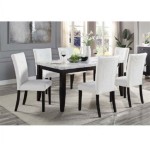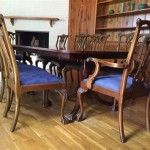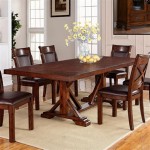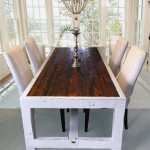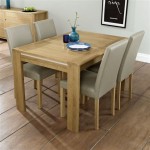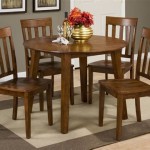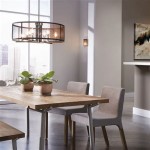Artificial Flowers in Vases for Dining Tables: An Enduring Decor Choice
Artificial flowers in vases have become a staple in interior design, particularly as centerpieces for dining tables. Their popularity stems from a combination of aesthetic appeal, practicality, and longevity. Unlike their natural counterparts, artificial flowers offer a consistent visual presence, require minimal upkeep, and can be selected to complement a wide range of styles and color schemes. This article will explore the various aspects of using artificial flowers as dining table décor, covering the selection process, arrangement techniques, maintenance, and the enduring benefits they offer.
Selecting the Right Artificial Flowers
The selection of appropriate artificial flowers is crucial to achieving a desired aesthetic for the dining table. The market offers a diverse array of options, ranging from realistic silk blooms to more stylized and abstract interpretations. Choosing the right type of flower, color palette, and material will significantly impact the overall appearance of the dining space.
One of the primary considerations is the level of realism desired. High-quality silk or fabric flowers can convincingly mimic the appearance of fresh blooms, featuring intricate details in petal formation, color gradients, and even subtle veining. These realistic options are ideal for creating a sophisticated and elegant ambiance. Conversely, stylized artificial flowers, often made from materials like plastic or resin, can provide a more contemporary and artistic touch. These options may prioritize bold colors, geometric shapes, or unique textural elements.
The color palette should be carefully considered in relation to the existing décor of the dining room. Neutral tones, such as whites, creams, and light greens, can create a calming and versatile centerpiece that complements a variety of styles. Bold colors, such as reds, oranges, and purples, can add a vibrant and energetic touch, but should be used judiciously to avoid overwhelming the space. It's also important to consider the seasonal aspect. For example, warmer colors and autumnal foliage are often favored during the fall, while brighter, lighter colors are more commonly used in the spring and summer.
The material of the artificial flower also plays a role in its appearance and longevity. Silk flowers are generally considered the most realistic and elegant option, but they can be more expensive than other materials. Polyester flowers offer a good balance of realism and affordability. Plastic flowers are the most budget-friendly option, but may not offer the same level of detail or realism. The selected material should also be durable and easy to clean.
Finally, the size and scale of the artificial flowers should be appropriate for the size of the dining table. A large, elaborate arrangement may be suitable for a large dining table, while a smaller, more understated arrangement may be more appropriate for a smaller table. It's important to ensure that the arrangement does not obstruct the view of guests or interfere with conversation.
Choosing the Appropriate Vase
The vase is as important as the flowers themselves in creating a visually appealing centerpiece. The vase should complement the style and color of the flowers, as well as the overall décor of the dining room. The size, shape, and material of the vase should also be carefully considered.
The size of the vase should be proportionate to the size of the dining table and the arrangement of flowers. A vase that is too small may look insignificant, while a vase that is too large may overwhelm the space. The shape of the vase should also complement the shape of the flowers. Tall, slender vases are well-suited for long-stemmed flowers, while shorter, wider vases are better suited for flowers with fuller blooms. A round vase can soften angular lines and balance a room. A square vase provides a modern, structured aesthetic and adds a contemporary feel.
The material of the vase can also impact the overall aesthetic. Glass vases are a classic choice that allows the stems of the flowers to be visible, adding visual interest. Ceramic vases offer a wider range of colors and textures, and can be used to add a touch of personality to the dining table. Metal vases can create a more modern and industrial look. Consider the opacity of the vase; a clear vase showcases the stems and water (or faux water if using artificial flowers), while an opaque vase hides the stems and adds an element of mystery.
The color and texture of the vase should also complement the flowers and the dining room décor. A neutral-colored vase can be used with a variety of different flowers, while a brightly colored vase can add a pop of color to the space. A textured vase can add visual interest and depth.
Consider the stability of the vase. A vase with a wide base is less likely to tip over, especially if it is filled with heavy flowers or if the dining table is prone to bumps. The weight of the vase is also a factor; a heavier vase is more stable than a lighter vase.
Arranging Artificial Flowers in a Vase
The art of arranging artificial flowers involves creating a visually balanced and aesthetically pleasing composition within the chosen vase. This process requires careful consideration of the height, depth, and overall form of the arrangement. The following pointers will guide the creation of a professional-looking display.
Start with a focal point. Choose one or two of the most striking flowers in the collection and position them prominently within the vase. These focal flowers will serve as the visual anchor for the entire arrangement.
Vary the height of the stems. Cutting the stems to different lengths will create a more dynamic and natural-looking arrangement. Taller stems can be placed towards the back of the vase, while shorter stems can be placed towards the front and sides. This creates depth and dimensionality.
Create a balanced composition. Distribute the flowers evenly around the vase, ensuring that the arrangement is visually balanced from all angles. Avoid creating a top-heavy or lopsided arrangement. Consider the positioning of different colors and textures to create a harmonious overall effect.
Add filler greenery. Greenery, such as ferns, eucalyptus, or ivy, can be used to fill in any gaps in the arrangement and add a touch of naturalness. Choose greenery that complements the flowers in terms of color and texture.
Secure the stems. If the vase is wide-mouthed, use floral foam or pebbles to secure the stems in place and prevent them from shifting around. This will help maintain the desired shape of the arrangement.
Fluff and shape the petals. Artificial flowers can sometimes arrive flattened or misshapen. Take the time to fluff and shape the petals to restore them to their natural form. This will enhance the realism of the arrangement.
Consider the surrounding environment. The arrangement should complement the overall décor of the dining room. Avoid choosing flowers that clash with the existing color scheme or style. The lighting in the room can also impact the appearance of the arrangement; consider how the flowers will look under different lighting conditions.
Maintaining Artificial Flower Arrangements
While a significant advantage of artificial flowers is their low maintenance nature, some basic care is required to keep them looking their best. Regular cleaning and occasional adjustments will ensure that the arrangement remains a beautiful addition to the dining table.
Dusting is crucial. Dust can accumulate on the petals and leaves of artificial flowers, dulling their color and detracting from their realism. Regularly dust the flowers with a soft cloth, feather duster, or a can of compressed air. Pay particular attention to the crevices and folds of the petals.
Washing when necessary. If the flowers become heavily soiled, they can be washed with mild soap and water. Gently submerge the flowers in a solution of soapy water, then rinse them thoroughly with clean water. Avoid using harsh chemicals or abrasive cleaners.
Sunlight considerations. Prolonged exposure to direct sunlight can cause the colors of artificial flowers to fade over time. Position the arrangement away from direct sunlight or use flowers that are specifically treated to resist fading.
Re-arranging and fluffing. Over time, the arrangement may become misshapen or the flowers may become flattened. Periodically re-arrange the flowers and fluff the petals to restore the arrangement to its original form. This can revitalize the look of the arrangement and prevent it from looking tired or dated. Replace missing or damaged flower heads to maintain the original fullness.
Storing artificial flowers. When not in use, store artificial flowers in a cool, dry place away from direct sunlight. Wrap them in tissue paper or store them in a box to protect them from dust and damage.
The Advantages of Artificial Flowers
The sustained popularity of artificial flowers in vases for dining tables is a testament to their numerous advantages. These advantages extend beyond mere aesthetics and encompass practical, economical, and environmental considerations.
Longevity is a key benefit. Unlike fresh flowers, artificial flowers will last for years with proper care. This eliminates the need for frequent replacements, saving both time and money. The initial investment may be higher than for fresh flowers, but the long-term cost is significantly lower.
Minimal maintenance is another significant advantage. Artificial flowers require no watering, fertilizing, or pruning. This makes them an ideal choice for individuals who do not have the time or inclination to care for fresh flowers. A simple dusting is usually all that is required to keep them looking their best.
Allergy-free environment. Fresh flowers can trigger allergies in some individuals. Artificial flowers eliminate this risk, making them a suitable choice for homes with allergy sufferers. This allows everyone to enjoy the beauty of flowers without experiencing any adverse reactions.
Consistent appearance and availability. Artificial flowers maintain their appearance throughout the year, regardless of the season. This ensures a consistent and reliable aesthetic for the dining table. They are also available in a wider range of colors and styles than fresh flowers, providing greater flexibility in decorating the dining room.
Variety and Customization. Artificial flowers offer endless possibilities in terms of variety and customization. They come in diverse colors, textures, and shapes, enabling one to match any specific theme or style. They allow the creation of unique and personalized arrangements that reflect personal taste and preference.

Tulip Artificial Flower Faux Pink Flowers Tulips In Clear Vase Arrangement Water Dining Table Centerpiece Home Decor

White Artificial Flower Arrangement In Vase Dining Table Centerpiece Fake Decor

Silk Flower Arrangement Clear Glass Modern Dining Table Centerpiece Bridal Long Rectangular Vase Real Touch Roses Peony Etsy

Fake Flowers With Vase Dining Table Decor Rustic Home Office Centerpiece

Table Vase Of Artificial Flowers Kitchen Decor Mason Jar Filled With Hydrangeas And Sunflower Arrangement Farmhouse Decorw Etsy

Tetou 14 5 11 Fake Flowers With Vase Artificial Silk Roses In Plant Eucalyptus Flower For Home Office Farmhouse Bathroom Dining Table

Purple Artificial Flower Arrangement In Gold Vase Fake Dining Table Centerpiece

Fake Flowers With Vase Dining Table Decor Rustic Home Office Centerpiece
Dining Table Decor Dajkiuy Fake Flowers With Vase Silk Faux Flower Arrangement Artificial Centerpiece Decorations Wedding Home Office Kitchen Dini Wal

Acopa 6 1 4 Cylindrical Standard Glass Vase 12 Case

